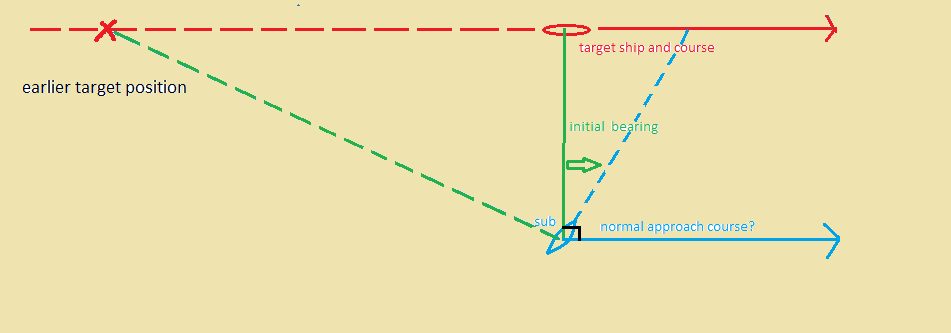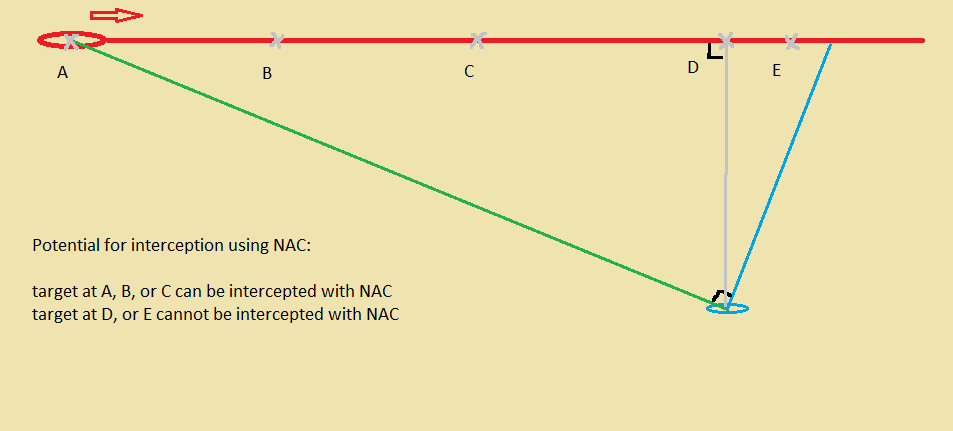
|
|
SUBSIM: The Web's #1 resource for all submarine & naval simulations since 1997
 |
SUBSIM: The Web's #1 resource for all submarine & naval simulations since 1997 |
|
|||||||||
 |
|
|
Thread Tools | Display Modes |
|
|
 04-27-14, 04:45 PM
04-27-14, 04:45 PM
|
#1 | |
|
Silent Hunter
 Join Date: Sep 2010
Posts: 3,975
Downloads: 153
Uploads: 11
|
Quote:
You are right about the cases you illustrated. Neither of these would permit an interception with the Normal Approach Course. If the target had been detected earlier, the situation would be very different.  Your second case is just like the first, except the target is even farther past. 
|
|

|

|
 04-27-14, 10:07 PM
04-27-14, 10:07 PM
|
#2 |
|
Mate
 Join Date: Aug 2007
Location: Seattle
Posts: 51
Downloads: 27
Uploads: 0
|
Ahh, I guess that's what you meant when you originally said "if ... it has already passed". Of course, without knowing the target's course, there's no way to know whether the target has passed or not, but as Warren Peace said, I can just try it out and see if the target is getting closer. (Thankfully SH3 sonarmen can discern that instantly. :-)
So it does seem like a good approach to know, since it's simple and when it works it does give the slowest possible interception as you said, and slower means stealthier. In some cases (e.g. when the target is close to point D) it could take 'forever' but I believe you when you say it works pretty well in practice. In fact, our two approaches seem quite similar in that they both attempt to find a lead pursuit course based on zeroing the rate of bearing change. Yours (NAC) fixes course and adjusts speed to find the minimum speed required, but fails if the target isn't 'behind' you. Mine fixes speed and adjusts course to find the minimum time required, but fails if the chosen speed is too low. Since I'm early in the war I can afford to zip around on the surface and just want the fastest intercept. Later, when I have to be stealthier, I might switch to NAC to find the stealthiest intercept. :-) I appreciate the explanation, in any case! I learned something. Last edited by AdamMil; 04-27-14 at 11:36 PM. |

|

|
 |
|
|
